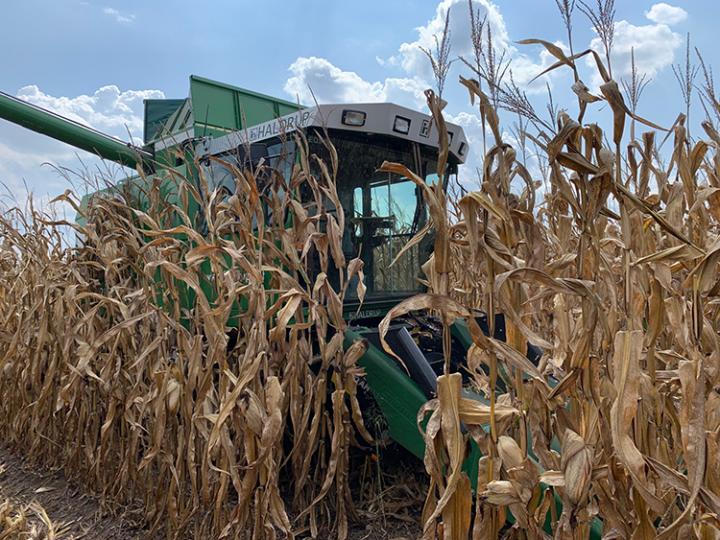
Credit: APS
Foliar diseases, such as gray leaf spot, northern corn leaf blight, and southern rust, were estimated to cause annual losses ranging from 19,029 to 244,149 metric tons from 2012 to 2015 in Kentucky. To mitigate these damages, farmers have turned to foliar fungicides. However, as plant pathologist Carl Bradley explains, “Kentucky corn farmers had questions about the best timing to apply a foliar fungicide to their corn crop.”
To answer this question, Bradley and his colleagues at the University of Kentucky established corn fungicide research trials at nine locations throughout Kentucky. They evaluated a single fungicide application at the six-leaf collar stage (known as the V6 stage) or at the silking stage (known as the R1 stage) as well as a sequential application at both stages. They found that treatments at the silking stage provided the best foliar disease control. They also found that the single application at the silking stage did not differ from the sequential double application.
“Our findings suggest that Kentucky corn growers likely can rely on a more cost-effective single fungicide application at R1 for foliar disease management and improve return on fungicide investment rather than making multiple applications at different times,” said Bradley.
As the data were collected from field trials conducted at nine locations across two years, Bradley and his colleagues were able to analyze a large dataset. “This helped us observe the effects of a foliar fungicide on corn across much of the corn-producing area of Kentucky, which gives much confidence in the results.”
This research is also the first to show that severity of Curvularia leaf spot can be reduced with a foliar fungicide application in the U.S. This is a new disease of corn in the region and this finding is a first step toward learning best management practices.
###
For more information about this study, read “Effect of Benzovindiflupyr + Azoxystrobin + Propiconazole Fungicide Applied at Different Growth Stages on Foliar Disease Severity, Grain Yield, and Economic Benefit of Hybrid Corn Grown in Kentucky” published in the August issue of Plant Health Progress.
Media Contact
Ashley Bergman Carlin
[email protected]
Related Journal Article
http://dx.




